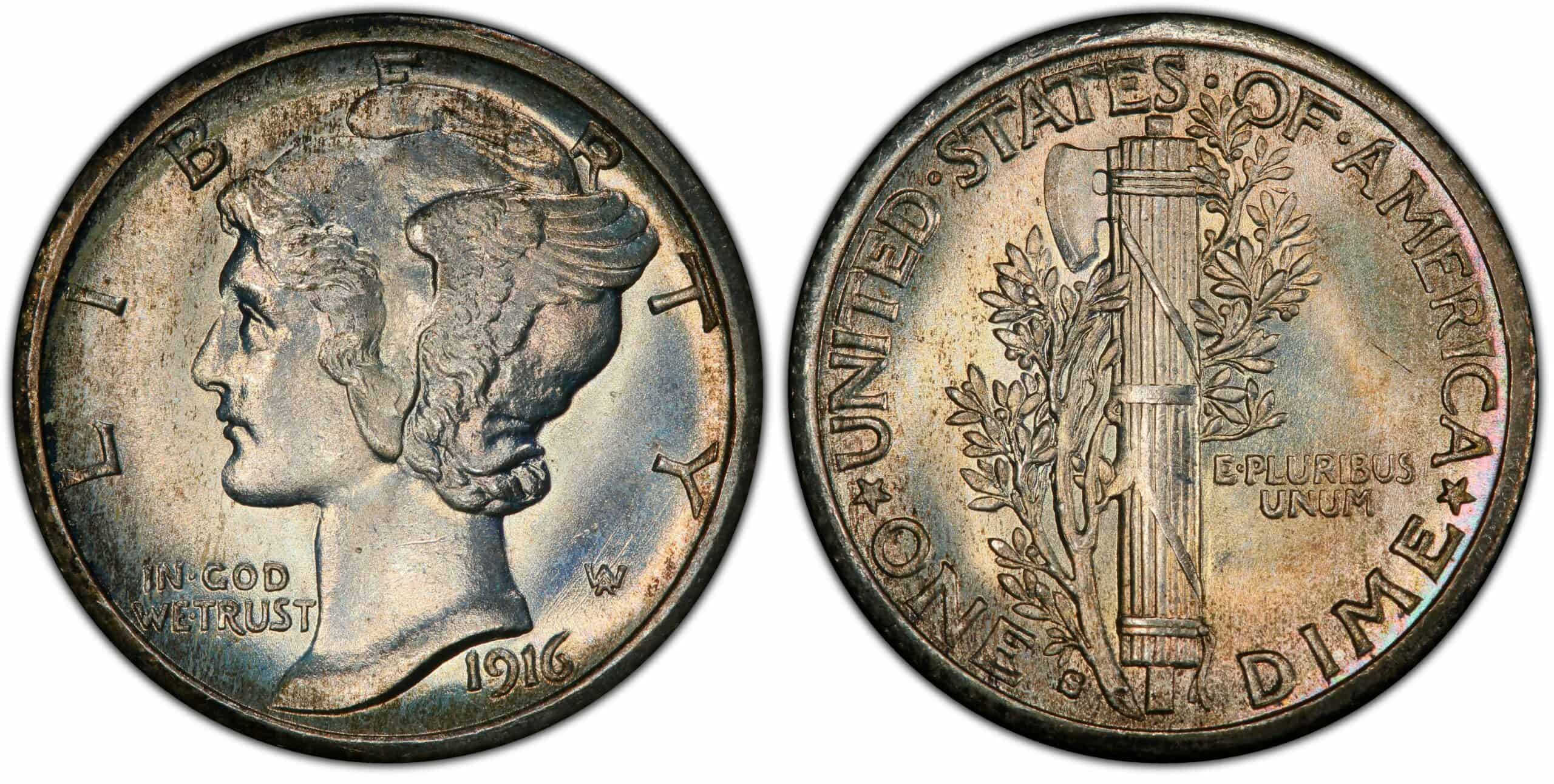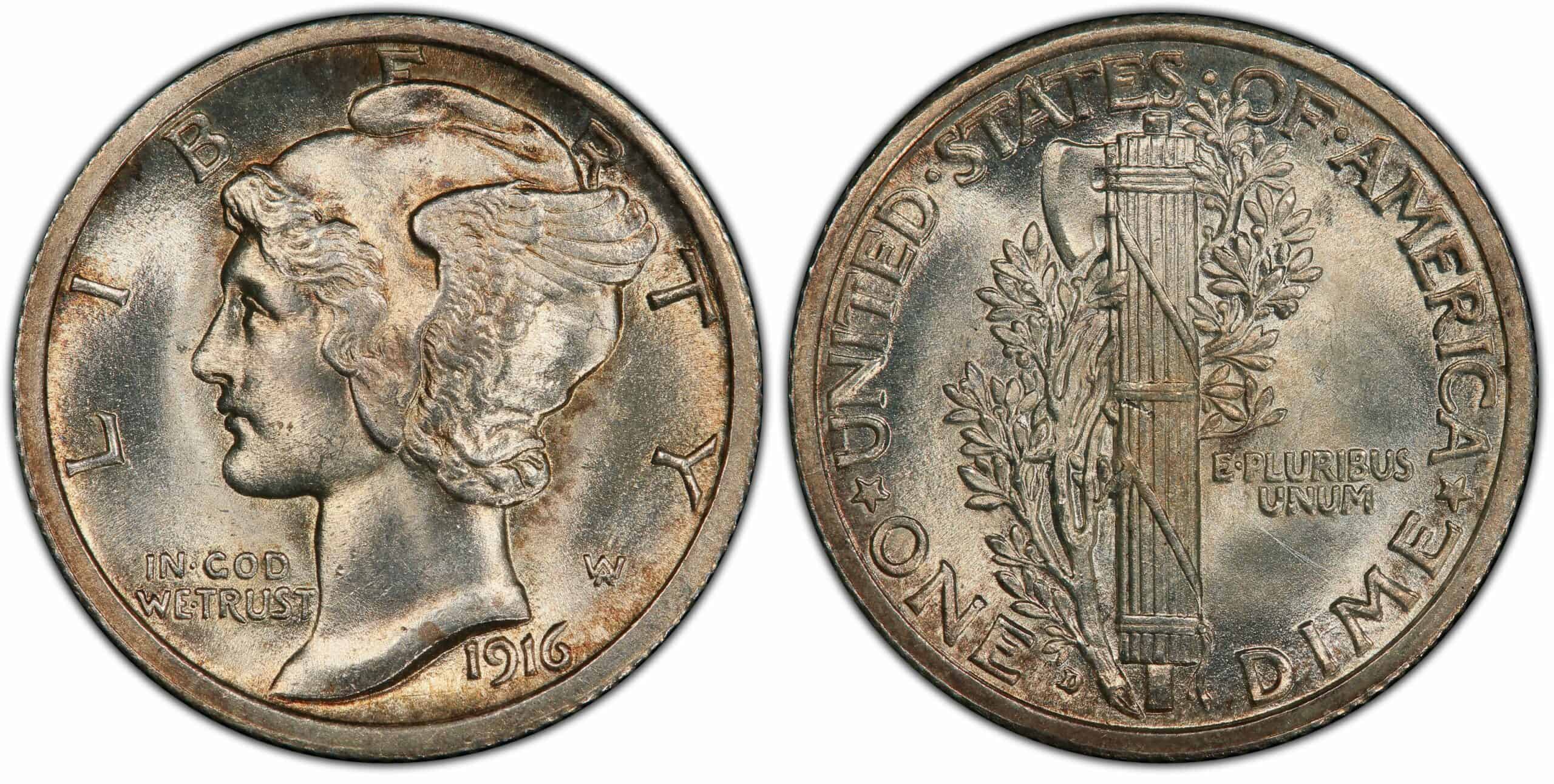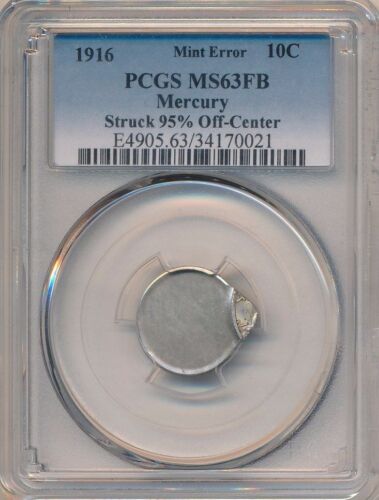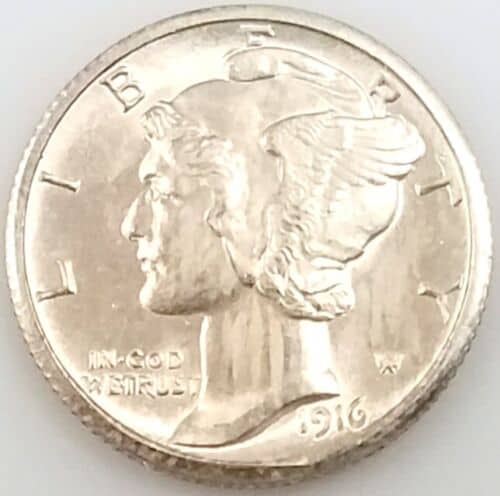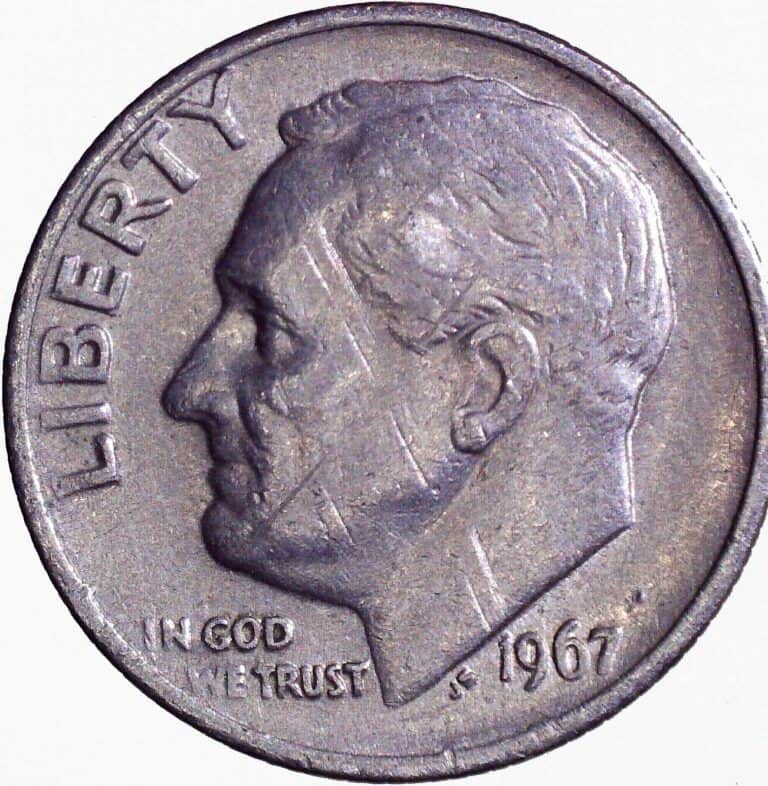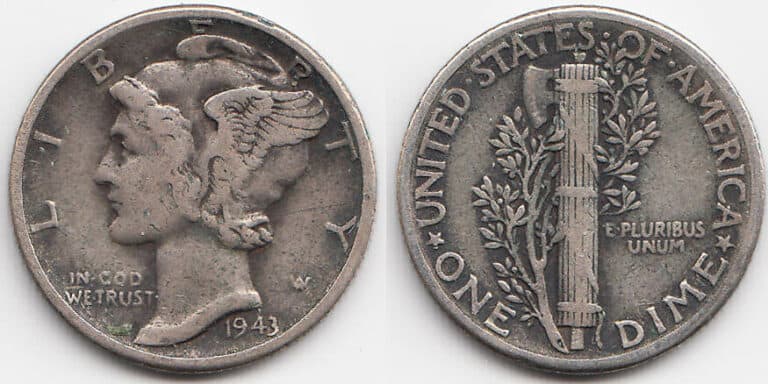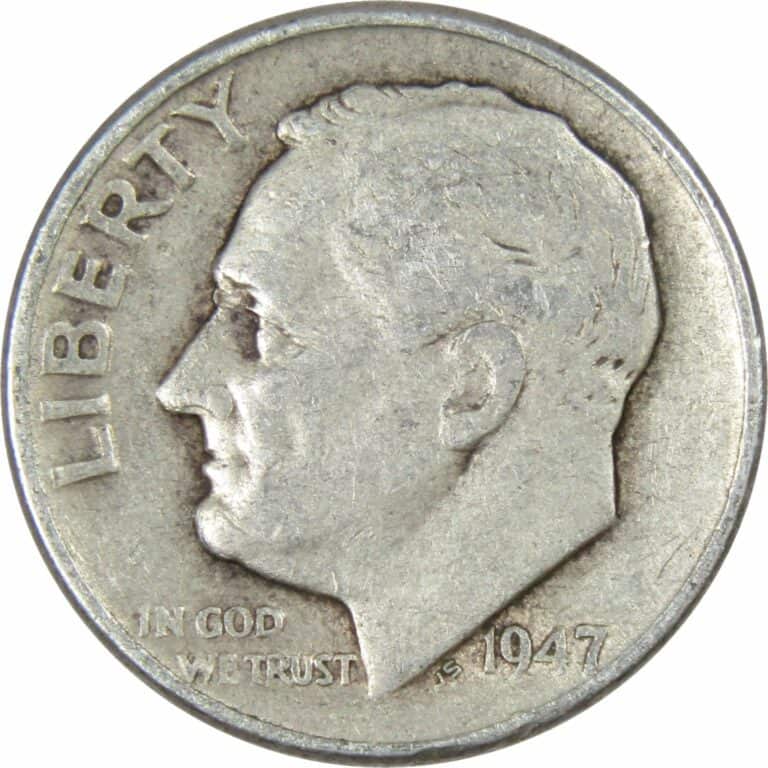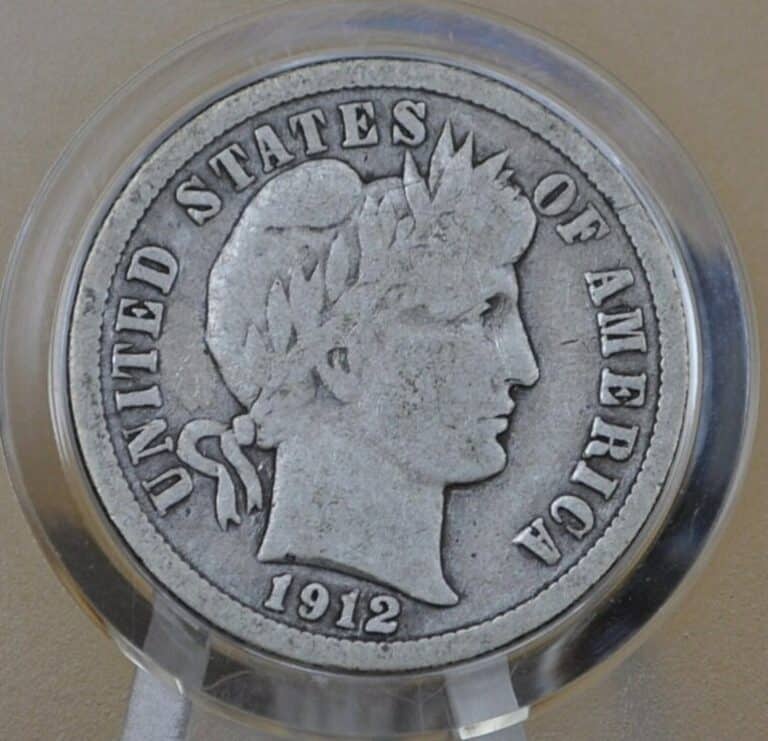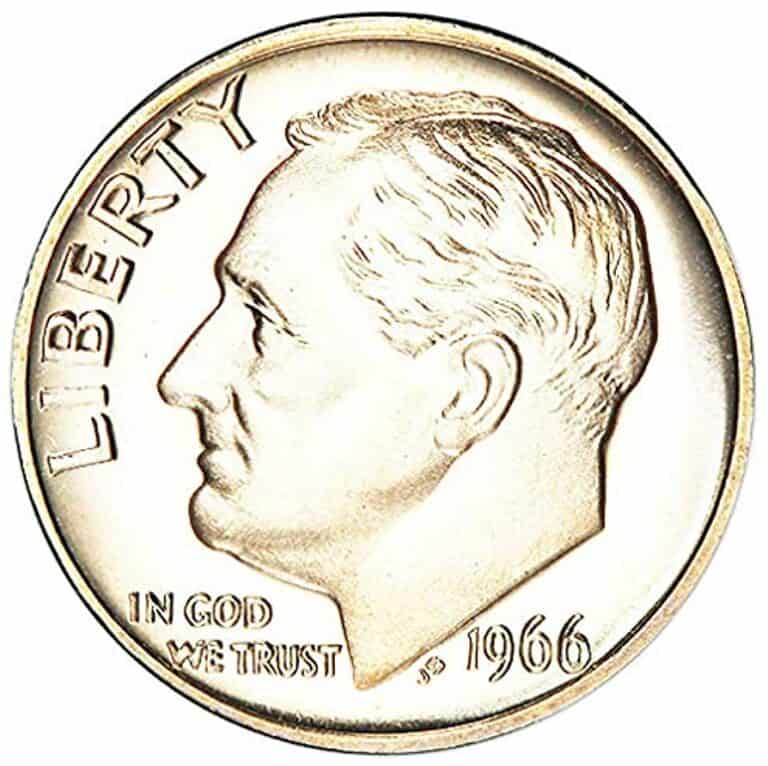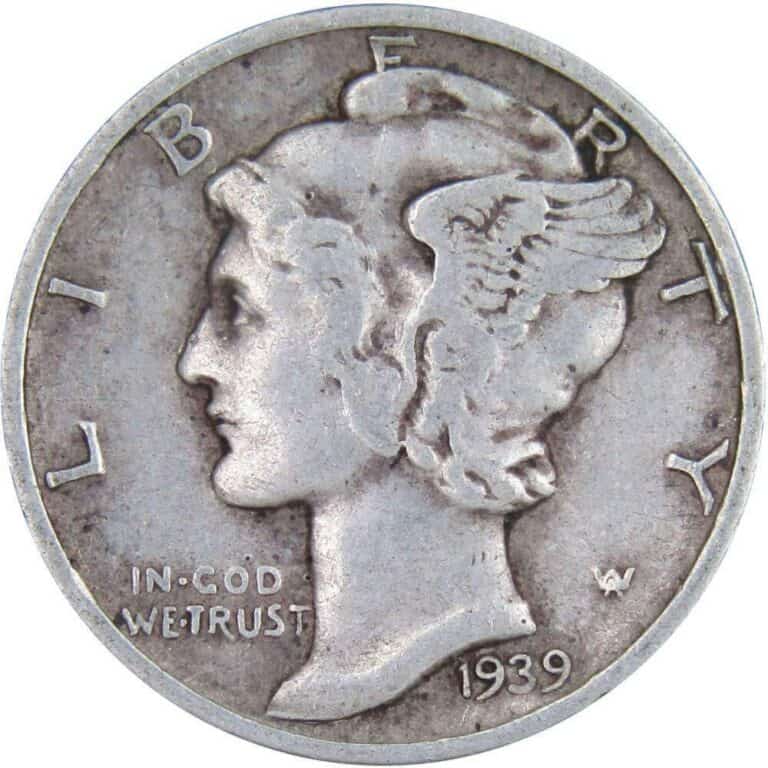1916 Dime Value: How Much Is It Worth Today?
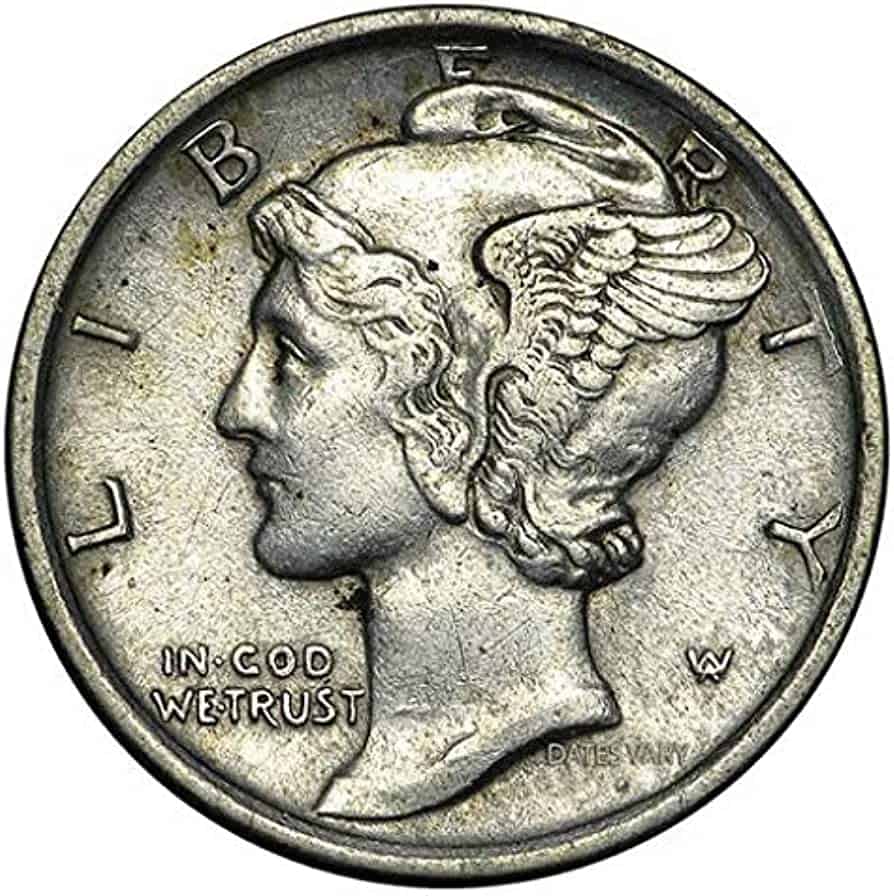
Are you curious about the worth of a dime from 1916? Whether you stumbled upon one or are looking to buy. It’s important to understand the value, history, and potential errors of this coin. The 1916 Mercury dime has considerable significance as both a numismatic coin and silver bullion. By delving further into this article, you can obtain a better understanding of the coin’s value and distinctiveness.
1916 Dime Details
The 1916 Mercury is a true masterpiece of American coinage coveted by collectors and investors alike, this iconic silver coin is a part of the Mercury Dimes series that was minted from 1916 to 1945. Designed by Adolph A. Weinman, it features a stunning depiction of Liberty on the Obverse, with a winged cap on her head, reminiscent of the Roman god Mercury. The reverse displays fasces, symbolizing the strength of the United States of America through unity.
Minted in three locations: Philadelphia, Denver, and San Francisco, this dime has a total mintage of 32,894,080. Despite its relatively high mintage, the 1916 Mercury dime remains highly sought-after by collectors and investors alike, due to its 90% silver composition and exquisite design.
The 1916 Mercury dime, also known as the Liberty Winged Head is composed of 90% silver and 10% copper, with a fineness of 0.9. It has a silver weight of 0.0723 oz and a total of 2.5 grams. With a diameter of 17.9mm, this dime with a reeded edge is a small but significant piece of American history. Its silver content alone gives it a melt value of $1.83 as of April 16th, 2023, but its true value lies in its numismatic appeal.
While a heavily used coin may fetch only a few dollars, a Mint-State 1916 dime can be valued at a remarkable $3,550 to $4,000.
1916 Dime Value Chart
| Mint | Good | Fine | Very Fine | Uncirculated |
| 1916 No Mint Mark Dime Value | $5.38 | $8.82 | $10.10 | $41 |
| 1916 – D Dime Value | $1,162 | $2,882 | $4,617 | $14,244 |
| 1916 – S Dime Value | $5.38 | $11 | $15 | $50 |
1916 No Mint Mark Dime

The 1916 Mercury Dime is a highly sought-after coin among coin collectors. this silver dime was minted in Philadelphia in 1916, and it has a mintage of 22,180,080. While the coin’s face value is only ten cents. Its value on the open market can vary greatly based on its condition.
As of April 2023, the NGC Price Guide states that a 1916 Mercury Dime minted in Philadelphia and circulated can fetch between $6 and $47.50, while an uncirculated coin in pristine condition may sell for up to $3,500 on the open market. This significant variation in value underscores the pivotal role that a coin’s state of preservation plays in determining its worth.
Investing in a well-preserved 1916 Mercury Dime can yield dividends due to its condition affecting value. Whether you’re a seasoned collector or a newcomer to the world of numismatics, the 1916 Mercury Dime is a fascinating piece of history that’s sure to capture your interest.
1916 – D Dime
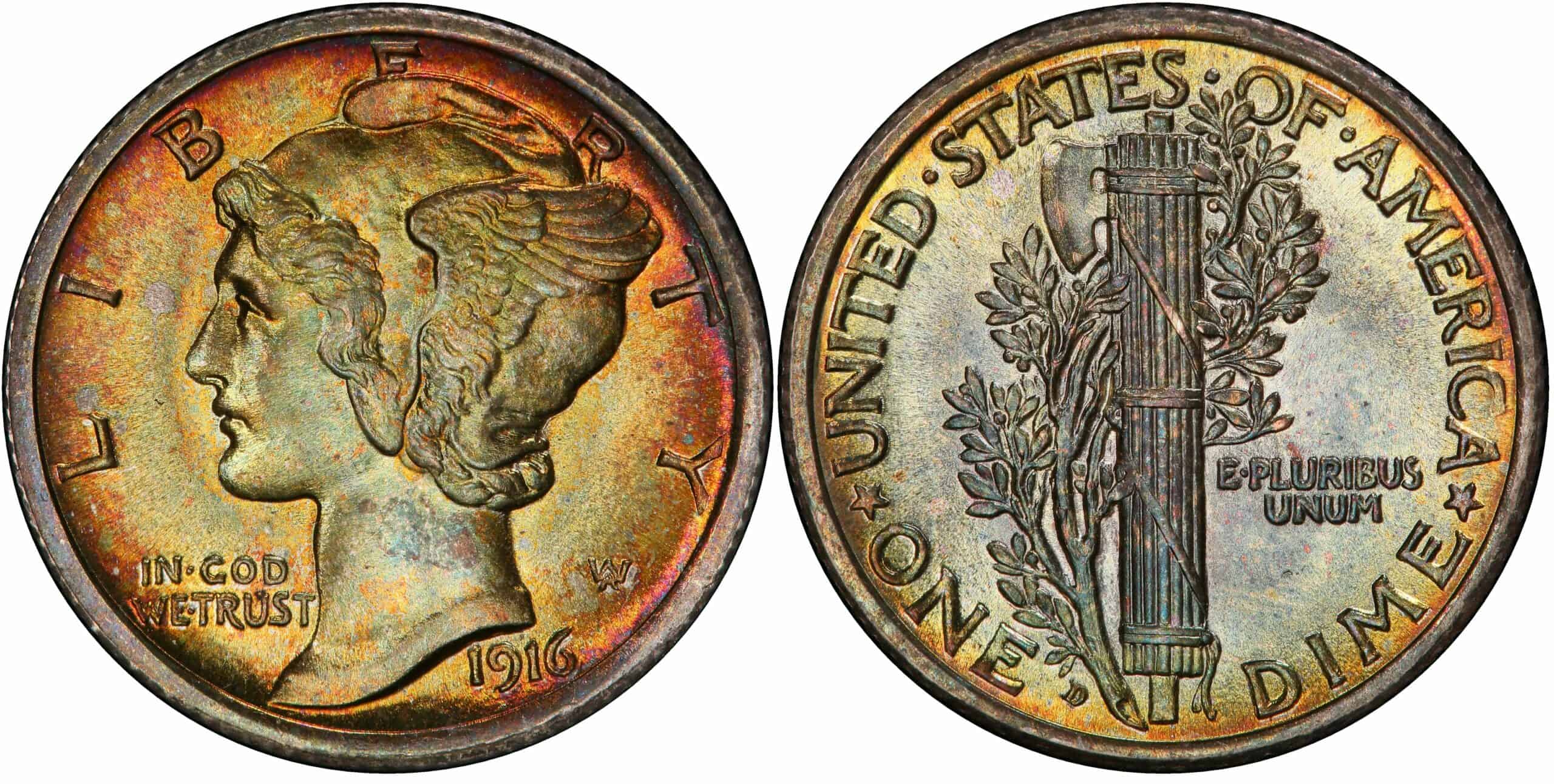
The 1916 “D” Mercury dime is a highly coveted coin among coin collectors and investors due to its rarity and unique features. Minted with a D mint mark which signifies that it was minted at the Denver Mint, it is one of the rarest and most valuable key date silver dimes in the Mercury dime series, with a total mintage of only 264,000. The Denver Mint reportedly halted the production of dimes in 1916 to focus on making quarters, contributing to the coin’s scarcity.
Its rarity factor and low mintage make the 1916 D Mercury dime a highly demanded coin, with even low-grade examples selling for over $999. In MS condition, the coin can be valued at around $50,000, while a poor condition example may only be worth $800. The value can increase further if the coin is certified or features an error, adding to its numismatic appeal.
In addition to being rare, the 1916 D Mercury dime which has a face value of 10 cents, is also known for its sharp strike and modest luster. These alongside the prevalence of toning, further add to its allure among collectors.
The 1916 D Mercury dime is one of the most highly sought-after coins in the United States, and as a result, it has become a prime target for counterfeiters. Interestingly, the 1916 Philadelphia issue of the coin is relatively common and more affordable. This provides counterfeiters with an opportunity to add a tiny “D” mintmark to the Philadelphia issue, making it appear to be the rare 1916-D. The 1916-S mint mark is also altered to resemble a “D” oftentimes. In general, be cautious when buying a 1916-D Mercury dime to avoid counterfeits and purchase only from reliable sources for authenticity.
1916 – S Dime
The 1916-S Mercury dime may not be as well-known as some of its counterparts, but it is a true hidden gem in the world of coin collecting. With a mintage of just 10,450,00, it may seem like an average coin, but its unique qualities make it a must-have for any collector.
Mint state examples of the 1916 S dime are plentiful, but they often suffer from weak strikes in the central portion of Liberty’s curls and on the central horizontal bands and lower diagonal bands of the fasces. However, these coins typically have excellent luster and are highly coveted by collectors.
One of the unique features of this coin is the S mark indicating it was minted at the San Francisco Mint, which was the same punch used for the Lincoln Cents of 1909 and used until early 1917. The first batch of reverse dies sent to the San Francisco Mint had the S mintmark tucked up very high against the olive branch, making it a minor variety in which the S mintmark is slightly overpunched, but this particular variation has not generated much interest from collectors.
As of April 2023, the NGC Price Guide states that a Mercury Dime from 1916 with the S mintmark, in a circulated condition, has an estimated value between $10 and $75. However, it is worth noting that on the open market, an impeccable, uncirculated example can sell for as much as $5,000. This significant price difference highlights the importance of condition when it comes to rare coins and collectibles.
History of The 1916 Dime
The Mercury Dime, designed by Adolph Weinman, was minted by the United States Mint from 1916 to 1945. Initially referred to as the Winged Liberty Head Dime, the coin’s obverse features a young lady Liberty who was frequently mistaken for the Roman god Mercury. Although the design was well-liked, some changes had to be made because the coin had issues with vending machines. The 1916 dime marked a significant moment in American history as it symbolized the end of an era and the start of a new one, after being introduced in 1796 and redesigned in 1837.
The year 1916 marked the 25th anniversary of the dime, quarter, and half dollar coins designed by Charles E. Barber, the Chief Engraver of the Mint. However, Mint officials were under the impression that the designs needed to be replaced and therefore held a competition among three sculptors, including Barber, who had been in his position for over three decades. After careful consideration, the designs created by Weinman were selected.
However, the new design faced technical issues, delaying large-scale production until October. Meanwhile, millions of dimes with the old Liberty Head design by Charles Barber and the 1916 date were coined to meet demand. The new dimes were finally released to circulation on October 28, 1916, after being anticipated by both numismatic and the public due to the awareness created by the media. Americans were enamored with the new coin and saved thousands of them in Mint state condition.
Although most surviving Mercury Dimes are well-struck, some may have weak portions in other areas of the design, which can affect their value. it is most likely that the better-preserved examples of the 1916 Mercury Dime were initially acquired by collectors. this is because collectors tend to have an eye for quality, and they often prioritize keeping their coins in good condition. Whether a collector or a casual numismatist, the 1916 Mercury Dime remains a fascinating piece of American coinage history.
1916 Dime Grading
Grading a 1916 Mercury dime can be very tricky, especially in lower grades. The reverse side of the coin typically appears more worn than the obverse, which can make it difficult to adhere to conventional grading standards. As a result, collectors and dealers may need to adjust their grading guides to match the actual condition of the coins they’re examining. Mint state Mercury dimes are easier to grade, with uncirculated examples typically grading MS63 or higher. The quality of strikes can also affect a Mercury dime’s grade, with coins exhibiting fully split and raised central bands on the fasces typically valued more highly.
If you are confused about how to properly grade your 1916 dime to get at least an estimated value, the video below should help.
Rare 1916 Dime Error Lists
When it comes to collecting coins, errors can often make a particular coin even more desirable. The 1916 dime is no exception. Minting errors can occur during the production process, affecting the coin’s overall value and appeal to collectors. We will discuss some of these errors in this section as they can make the 1916 dime a valuable addition to any coin collection.
1. 1916 Dime Die Cracks Error
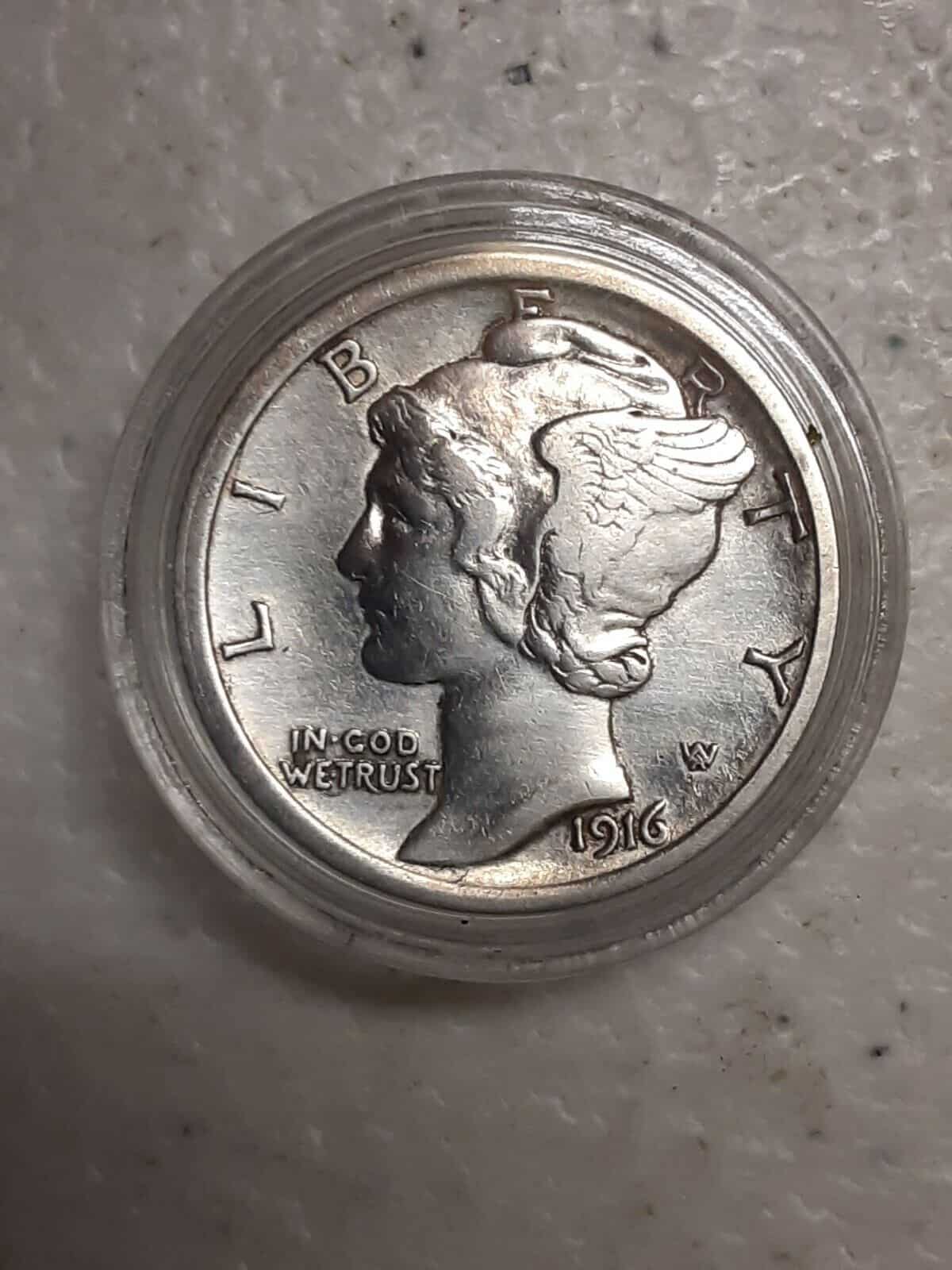
In 1916, a dime error was caused by a crack that developed on the stamp used to mint the coin. This resulted in incomplete or distorted images on both sides of the coin. The extent of the error varied, but it was due to the use of a faulty die during the minting process.
2. 1916 Off-Center Strike Dime Error
This error occurred when the coin’s blank planchet was struck by the die off-center, resulting in a portion of the coin with no visible markings. The degree of off-centering is sometimes expressed as a percentage, with 50% off-center indicating that roughly half of the coin’s blank section is visible. These off-center error coins are highly valuable and fetch high prices at auctions or the coin market. A rare 1916 Mercury Dime graded by PCGS struck 95% off-center and is valued at about $5,000 on eBay.
3. 1916 Dime Clipped Planchet Error
The 1916 dime clipped planchet error is a rare and valuable coin with an example valued at approximately $98 on eBay. This type of error occurs when a blank is punched incorrectly from a sheet of metal, leaving a clipped edge. What makes this particular error so rare and valuable is the additional off-center strike. While some collectors may underestimate the significance of clip errors, the clipped edge serves as a reliable indicator for genuine clips, with the metal flow towards the blank space being a key feature. For example, valued at approximately $98 on eBay. This type of error occurs when a blank is punched incorrectly from a sheet of metal, leaving a clipped edge. What makes this particular error so rare and valuable is the additional off-center strike. While some collectors may underestimate the significance of clip errors, the clipped edge serves as a reliable indicator for genuine clips, with the metal flow towards the blank space being a key feature.
4. 1916 Dime Repunched Mint Mark Error
One of the most fascinating errors in coin collecting is the 1916 Dime Repunched Mint Mark. This error happens when the mintmark is struck more than once, leading to a slightly misaligned or repeated mark. Although it can be difficult to spot, this nuanced error can add significant value to the coin, making it a highly valued item for collectors.
Watch this video for other interesting 1916 dime errors and their value.
1916 Dime FAQs
1. What Is The Value Of A 1916 Mercury Dime?
The value of a 1916 Mercury Dime varies based on its condition, mint mark, and rarity ranging from a few dollars to thousands.
2. How Can I Tell If My 1916 Mercury Dime Is Valuable?
To assess the value of a 1916 Mercury Dime, inspect for wear, mint marks, and errors like the Repunched Mint Mark. these factors affect rarity, condition, and worth.
Conclusion
The 1916 Dime holds an important place in American coin history, with its unique design and popularity among collectors. Despite initial issues with vending machines, modifications allowed them to be used widely. The coin is a testament to the artistry of Adolph Weinman and the craftsmanship of the United States Mint. It symbolizes America’s new spirit with its fresh design inspired by the ancient Romans and Greeks. The Mint and Treasury believed in its value.
